There are few things more thrilling than exploring a destination that feels completely otherworldly. The United States, with its diverse landscapes and unique geological formations, offers a plethora of spots where you might feel like you’ve stepped onto another planet. From surreal desertscapes to bizarre rock formations, these places can make you question whether you’ve accidentally wandered into a sci-fi movie. Here are 13 locations across America that deliver an experience so out of this world, you might not believe you’re still on Earth.
1. Antelope Canyon, Arizona
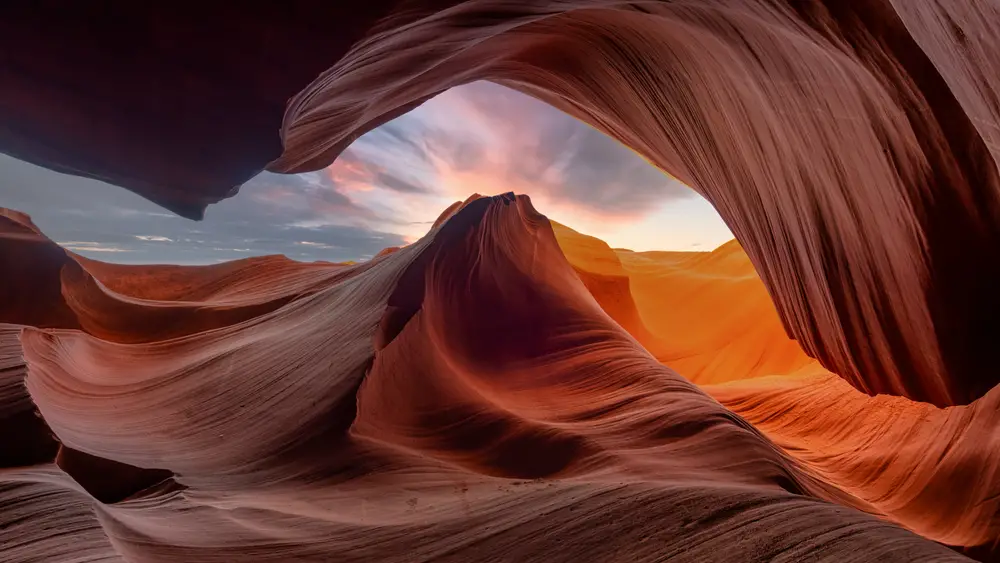
As you wander through the narrow passageways of Antelope Canyon, you’re enveloped by swirling sandstone formations that glow with hues of orange and red. The canyon, carved by flash floods and wind over centuries, provides a visual spectacle that seems more like a digital art piece than a natural phenomenon. The way the sunlight filters through the narrow crevices creates an ethereal atmosphere, turning the canyon into a photographer’s paradise. The experience can be incredibly meditative, as the ambient light shifts with every passing moment.
According to National Geographic, Antelope Canyon is one of the most photographed slots canyons in the world, drawing visitors and photographers from all corners of the globe. It’s not just the visual appeal; the cultural significance for the Navajo people adds a layer of depth to the experience. You’re not just witnessing a natural wonder; you’re stepping into a sacred space that has been revered for generations. Guided tours are recommended, as they offer insights into the history and geology that shaped this otherworldly site.
2. Badlands National Park, South Dakota

Driving through Badlands National Park can feel like venturing into a Martian landscape with its rugged terrain and eroded buttes. The park’s unique geological formations are striking, made up of layered sedimentary rock that reveals millions of years of history. As you traverse the park, you’ll encounter deep gorges, towering spires, and an expanse of mixed-grass prairie that stretches as far as the eye can see. The contrast between the barren rock formations and the vibrant sky is nothing short of mesmerizing.
Visiting Badlands National Park offers a chance to reflect on the forces of nature and time. The park is home to one of the world’s richest fossil beds, providing clues to ancient ecosystems and extinct creatures that once roamed the area. The stark beauty of the landscape invites contemplation and awe, as you walk in the footsteps of time. You’ll find that whether you’re hiking or simply taking in the views, the Badlands provide an unforgettable experience that feels worlds apart from the everyday.
3. Mono Lake, California

Mono Lake, with its strange and ghostly tufa towers, offers a glimpse into a landscape that feels distinctly alien. These limestone formations rise dramatically from the lake, created over centuries by the interaction of freshwater springs and alkaline lake water. The lake itself, one of the oldest in North America, is highly saline, supporting a unique ecosystem that includes brine shrimp and migratory birds. The juxtaposition of the desolate tufa towers against the vibrant life they sustain makes for an intriguing visit.
According to the Mono Lake Committee, the lake is an essential habitat for millions of migratory birds, making it a significant ecological site. The ethereal beauty of Mono Lake has inspired artists and conservationists alike, with efforts continuously underway to preserve its unique environment. As you explore the area, you’ll be struck by the serene yet otherworldly ambiance. It’s a rare place where you can experience the stark reality of nature’s artistry up close.
4. Painted Hills, Oregon
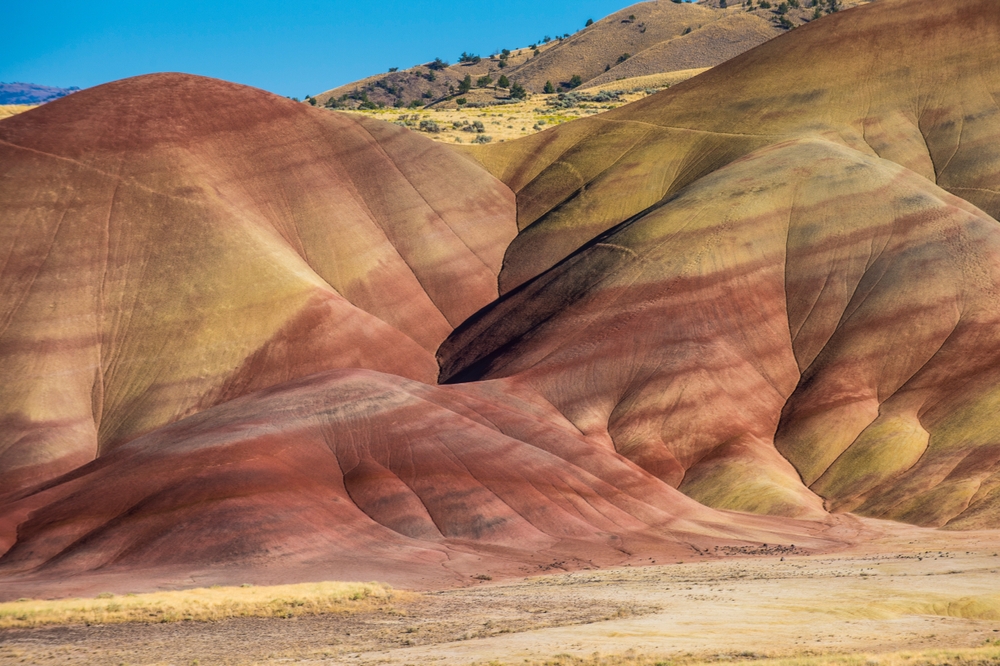
The Painted Hills in Oregon are a vivid display of nature’s palette, featuring layers of red, gold, black, and orange clay hills. The colors shift throughout the day, offering a constantly changing spectacle that feels like strolling through a living painting. These hills are part of the John Day Fossil Beds National Monument, home to one of the most complete records of fossil plants and animals in the world. Standing amidst the surreal colors, it’s easy to imagine you’re on another planet.
The Painted Hills offer more than just a visual feast; they’re a window into the past. The layers of claystone are a testament to ancient ecosystems and climate changes over millions of years. Walking the trails here, you’re not just observing stunning scenery; you’re witnessing history written in earth tones. It’s a humbling reminder of the planet’s ever-changing nature and the intricate beauty it creates.
5. White Sands National Park, New Mexico
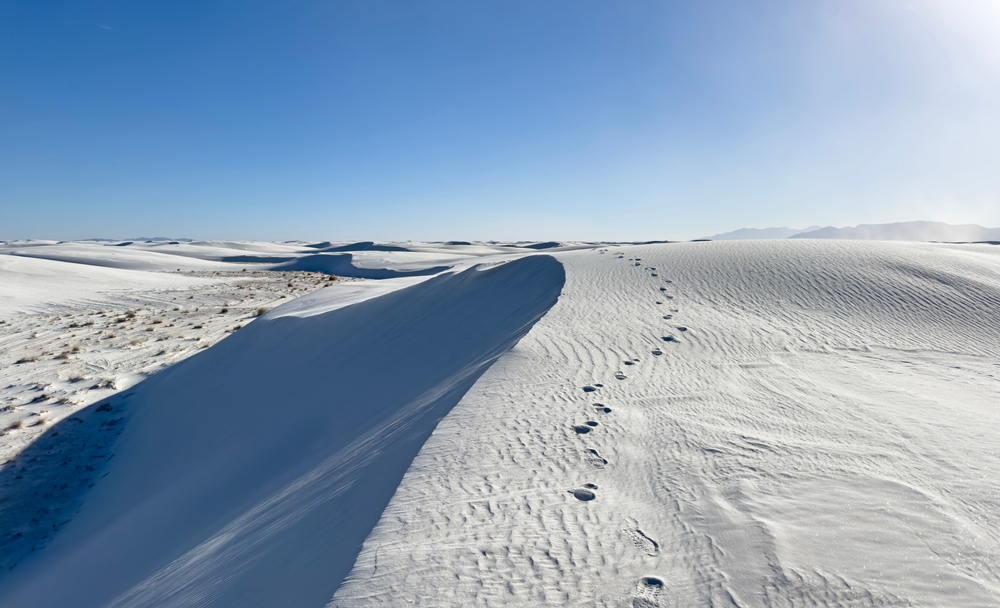
White Sands National Park is a place where you can lose yourself in waves of pristine, white gypsum dunes. Stretching over 275 square miles, it’s the largest gypsum dune field in the world, creating a landscape that feels almost lunar. The dunes are ever-shifting, sculpted by the wind, and provide a playground for hiking, sledding, and simply soaking in the surreal surroundings. The stark contrast of the white sand against the clear blue sky is a visual delight.
The park’s unique environment has been studied extensively, with the National Park Service noting its importance in understanding desert ecosystems. It’s home to a variety of flora and fauna adapted to the harsh conditions, offering a glimpse into the resilience of life. As you walk the dunes, you’ll find the simplicity of the landscape is both soothing and disorienting. It’s a place where time seems to stand still, and the beauty of nature takes center stage.
6. Devils Tower, Wyoming

Rising abruptly from the plains of Wyoming, Devils Tower is a geological oddity that seems to defy gravity. This massive monolith, sacred to many Native American tribes, is formed from volcanic rock and stands over 800 feet tall. The tower’s unique columnar structure makes it a favorite among rock climbers, but even if you’re not scaling its heights, the view from the base is awe-inspiring. The surrounding landscape of rolling hills and pine forests only adds to the tower’s mystique.
Devils Tower was declared the first national monument by President Theodore Roosevelt in 1906, a testament to its iconic status in American natural history. The site is rich with legends and folklore, adding a layer of cultural intrigue to its natural appeal. Exploring the area offers a sense of connection to both the earth and the stories it holds. You’ll leave with a deeper appreciation for the forces that have shaped our planet and the cultures that revere these natural wonders.
7. Craters of the Moon National Monument and Preserve, Idaho

The otherworldly landscape of Craters of the Moon is a volcanic wonderland filled with lava fields, cinder cones, and lava tubes. This expansive terrain was created by a series of eruptions over thousands of years, resulting in a landscape that resembles the surface of the moon. The stark black rocks and scattered vegetation create a haunting yet fascinating scene that invites exploration. Hiking through the park, you’ll feel as though you’ve traveled beyond Earth.
According to NASA, Craters of the Moon is so similar to lunar landscapes that it was used as a training ground for Apollo astronauts. This adds a layer of excitement to your visit, knowing that you’re treading the same ground as those who prepared to explore the moon. The park’s geological features offer insights into volcanic activity and the forces that shape our planet. It’s a place where science and nature converge, offering a unique experience that’s both educational and awe-inspiring.
8. Joshua Tree National Park, California
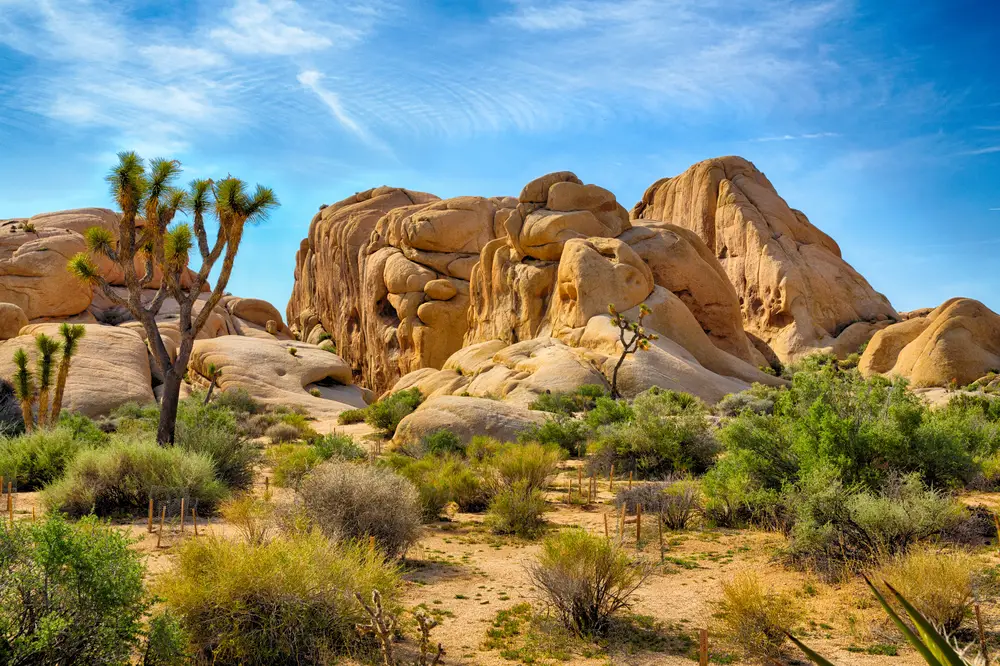
Joshua Tree National Park is a desert wonderland where the Mojave and Colorado deserts converge, creating a unique ecosystem. The park is named for the Joshua trees, which twist skyward like sentinels in a surreal landscape of rugged mountains and vast open spaces. It’s a haven for rock climbers, with its massive boulders and cliffs offering endless challenges. Even if you’re not climbing, the starlit skies and quiet desert beauty provide a serene escape from the everyday.
Beyond its visual appeal, Joshua Tree is a place of ecological significance, home to diverse plant and animal species adapted to the harsh desert environment. The park offers a chance to disconnect from the hustle of modern life and reconnect with nature in its rawest form. Whether hiking, camping, or simply taking in the views, you’ll find a sense of peace and wonder in this desert oasis. It’s a reminder of the beauty and resilience of life in even the most extreme conditions.
9. Great Sand Dunes National Park and Preserve, Colorado
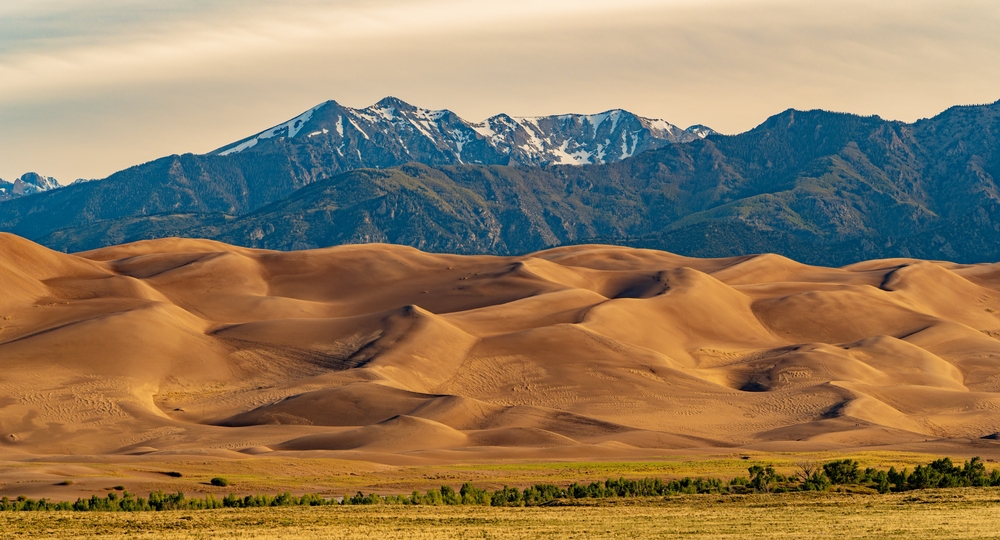
The towering dunes of Great Sand Dunes National Park are the tallest in North America, offering a landscape that feels like a vast desert amidst the Colorado mountains. The dunes reach heights of over 750 feet, providing endless opportunities for hiking, sandboarding, and sledding. The contrast between the stark sand and the surrounding snow-capped peaks creates a scene that’s both dramatic and surreal. The shifting sands offer a constantly changing landscape, inviting exploration and adventure.
Great Sand Dunes is more than just a playground; it’s a testament to the power of wind and water in shaping the earth. The park’s unique geology and hydrology are a focus of ongoing research, providing insights into the forces that create such stunning natural features. As you explore, you’ll find the dunes offer a sense of freedom and wonder, a chance to connect with nature’s beauty on a grand scale. It’s an experience that will leave you with a renewed appreciation for the natural world and its boundless creativity.
10. The Wave, Arizona

The Wave, located in the Coyote Buttes North area of Arizona, is a sandstone rock formation known for its undulating curves and vibrant colors. Its surreal appearance is the result of millions of years of erosion, creating a natural masterpiece that draws hikers and photographers from around the world. Navigating the swirling patterns of The Wave feels like walking through a psychedelic dream, with each angle offering a new visual delight. The challenging hike to reach it adds to the allure, making it a coveted destination for adventurers.
Due to its fragile nature and overwhelming popularity, access to The Wave is limited, with a lottery system in place to preserve this natural wonder. This exclusivity adds to its mystique, as those lucky enough to visit feel a sense of privilege. As you stand amidst the waves of stone, you’ll understand why it’s considered one of the most extraordinary geological formations on Earth. It’s a reminder of the art that nature creates, slowly and patiently, over vast stretches of time.
11. Mammoth Cave National Park, Kentucky
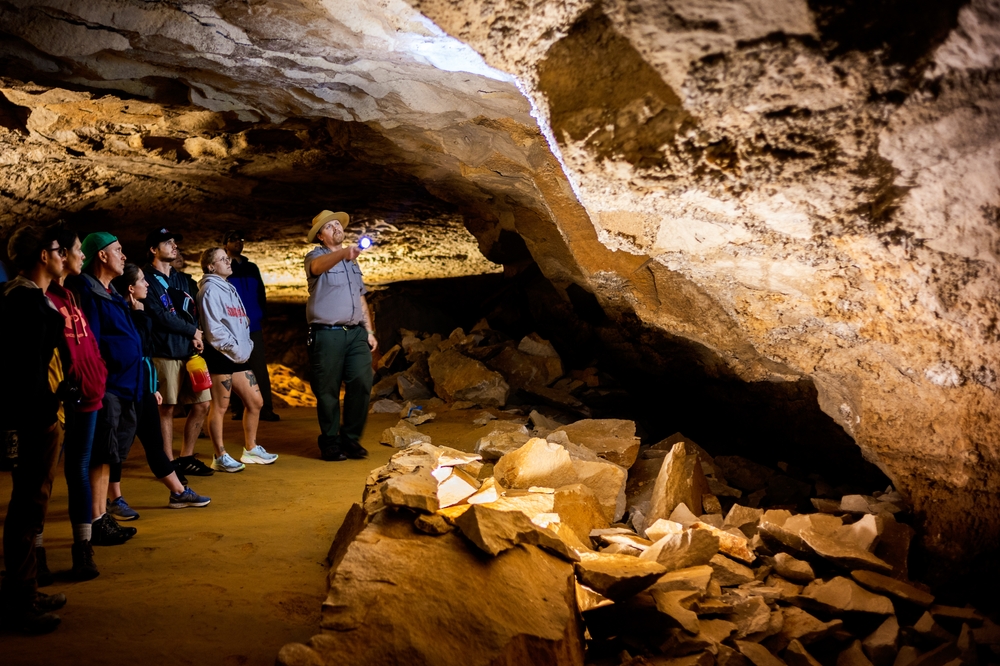
Venturing into Mammoth Cave is like stepping into another world, one filled with winding tunnels and vast chambers that stretch for miles beneath the earth’s surface. It’s the longest cave system in the world, with over 400 miles explored and much more likely undiscovered. The cave’s complex labyrinths and stunning geological formations, such as stalactites and stalagmites, create an environment that feels both mysterious and awe-inspiring. Guided tours offer a chance to explore its depths, revealing the cave’s hidden wonders.
Mammoth Cave is not only a natural wonder but also a UNESCO World Heritage Site, recognized for its geological and historical significance. The park serves as a living laboratory for scientists studying cave ecosystems and hydrology. As you navigate its passages, you’ll gain insight into the delicate balance of life that thrives in darkness. It’s an experience that connects you with the earth’s subterranean mysteries, inspiring wonder and respect for the hidden complexities of our planet.
12. Lassen Volcanic National Park, California
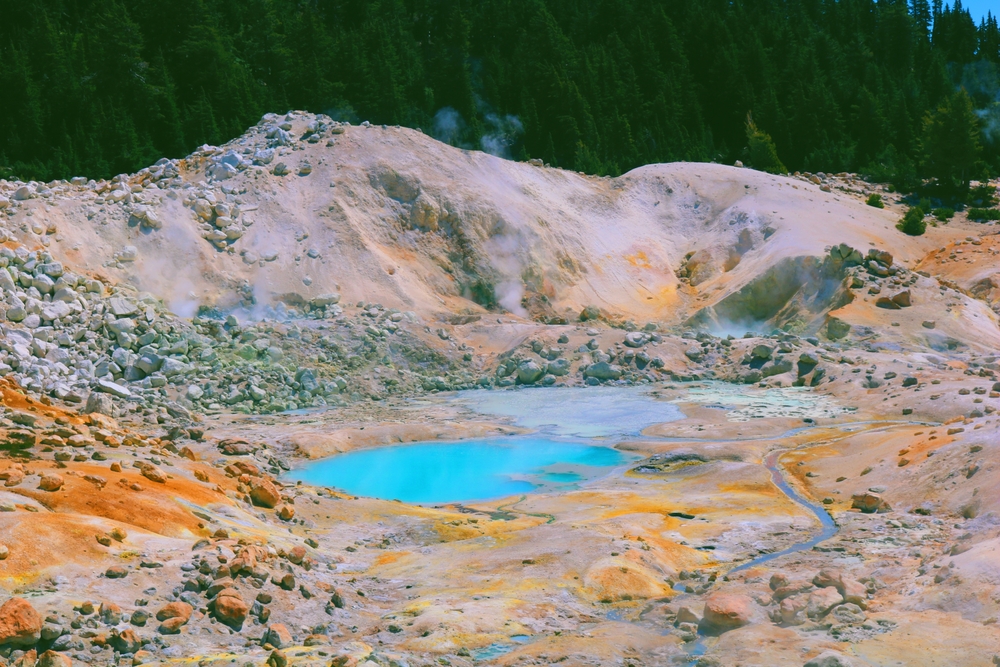
Lassen Volcanic National Park is a place where volcanic activity is front and center, with steaming fumaroles, boiling mud pots, and active geothermal areas. The park’s diverse landscape includes everything from lush forests to barren lava fields, offering a glimpse into the dynamic forces that shape our planet. Hiking through the park, you can witness the power of nature up close, with the smell of sulfur and the sound of bubbling mud providing sensory reminders of the earth’s constant activity. It’s a place that feels like an active laboratory of natural phenomena.
The park is home to all four types of volcanoes, a rarity that makes it a destination of interest for geologists and nature enthusiasts alike. According to the U.S. Geological Survey, Lassen Peak was the site of a significant volcanic eruption in 1915, an event that paved the way for increased understanding of volcanic processes. As you explore Lassen, you’ll gain a deeper appreciation for the planet’s ever-evolving nature and the forces that continue to shape it. It’s a reminder of the earth’s power and the resilience of life in the face of constant change.
13. Bryce Canyon National Park, Utah

Bryce Canyon National Park is renowned for its stunning collection of hoodoos, towering rock spires that rise from the canyon floor like the remnants of an ancient city. These formations, sculpted by erosion from frost and water, create a landscape that’s both surreal and magical. The park’s vibrant colors and unique geology offer a visual feast, with each viewpoint providing a new perspective on the intricate rock formations. As you hike through the park, you’ll feel as though you’re exploring a natural cathedral.
Bryce Canyon’s dark skies are also a major draw, offering some of the best stargazing opportunities in the United States. The park’s commitment to preserving this aspect of its environment has earned it the designation of an International Dark Sky Park. Whether you’re marveling at the celestial display above or the geological wonders below, Bryce Canyon offers an experience that’s both humbling and inspiring. It’s a place where the beauty of the earth and the universe converge, offering a glimpse into the vastness and complexity of the natural world.
